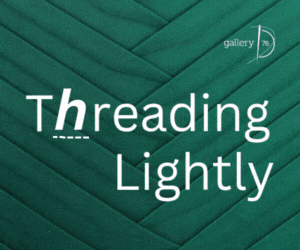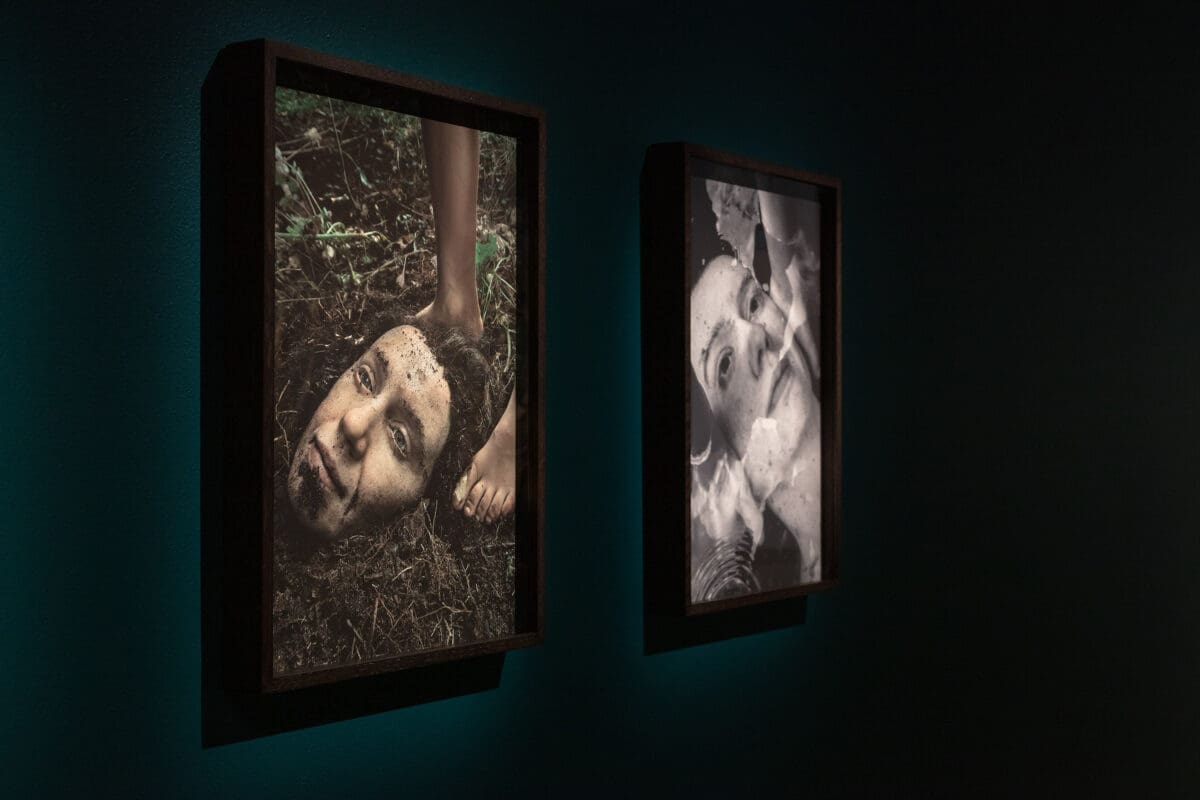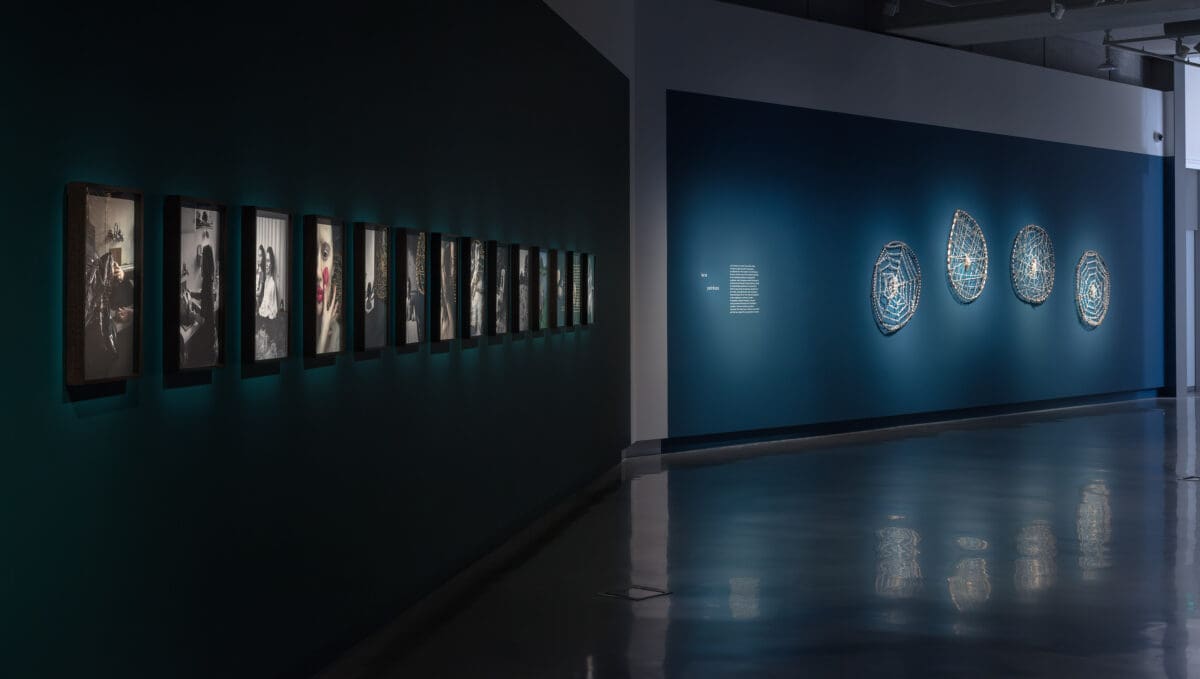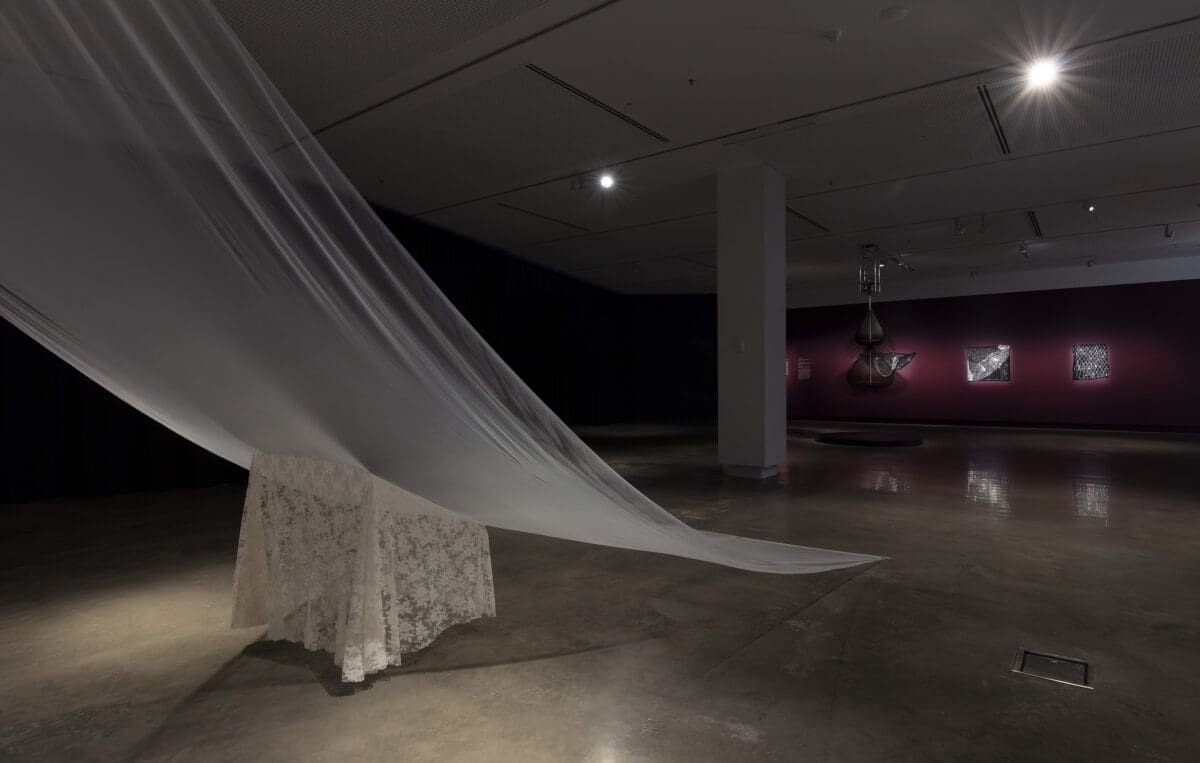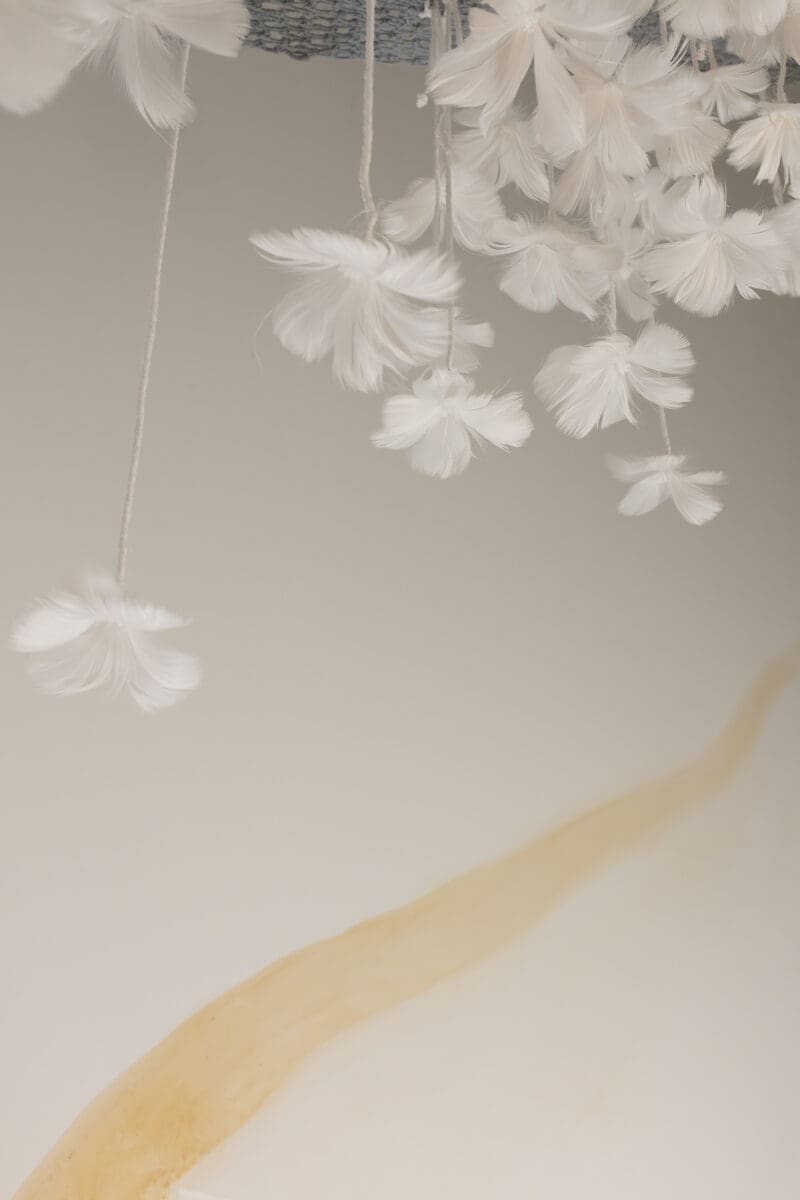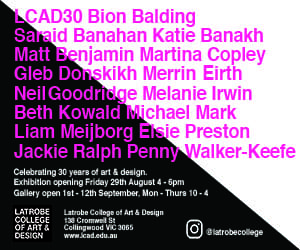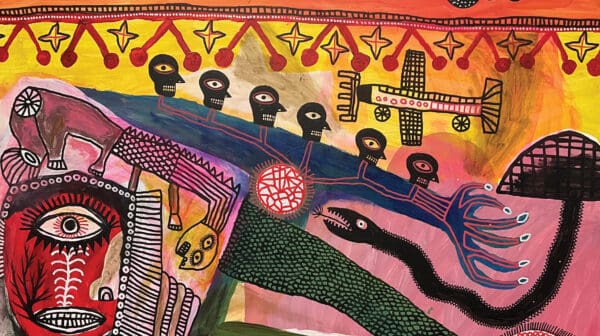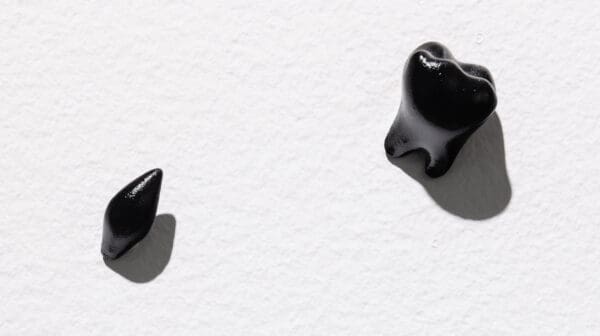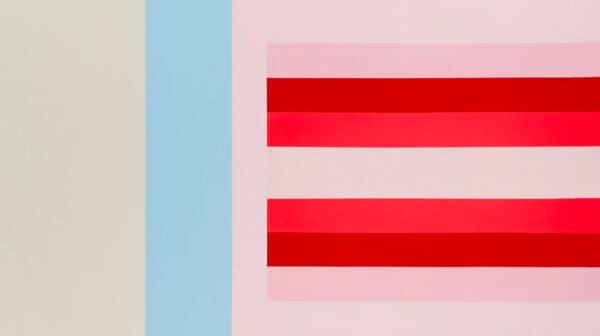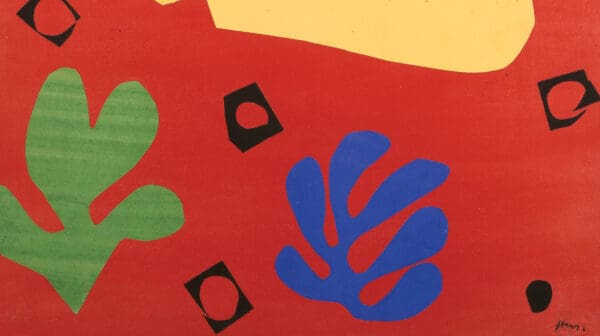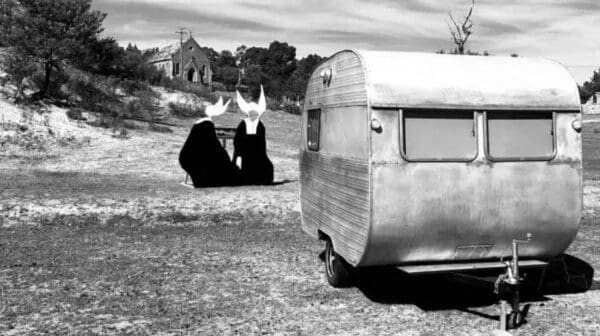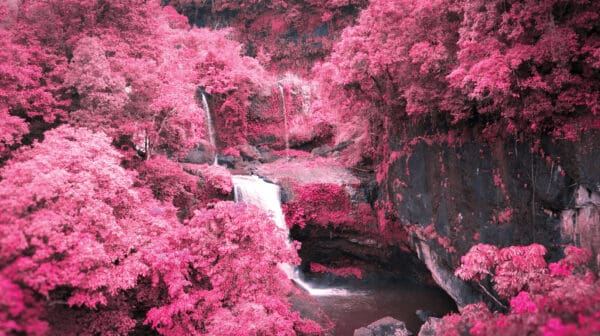Darkness is a word with many meanings; the shadows are dark, dark is a value in colour theory, darkness is a mood, a vibe, with usually negative connotations. The veil at Buxton Contemporary embraces the dark in all its glory.
It’s brave to exhibit art in rooms with the lights as low as you can safely get away with; yet that is precisely what curator Hannah Presley has done, turning down the lights to embrace the shadows. This suits the colour palette of the art, which is almost as monochrome as a black-and-white film. There is colour but it is muted by the darkness around it, and the interplay of shadows is powerfully evocative.
As Gunditjmara, Djabwurrung, and Nira-Bulok Taungurung artist Hayley Millar Baker whose three epic black-and-white films grace the space and provide a thematic backbone to the show, says, “The super low light, I feel, gives each of the artworks in the show life”. The dark spaces suit the works on display. “Hayley knows her way around the blackest of blacks,” Presley says. It’s a strength that’s been visible since her early-career photographs.
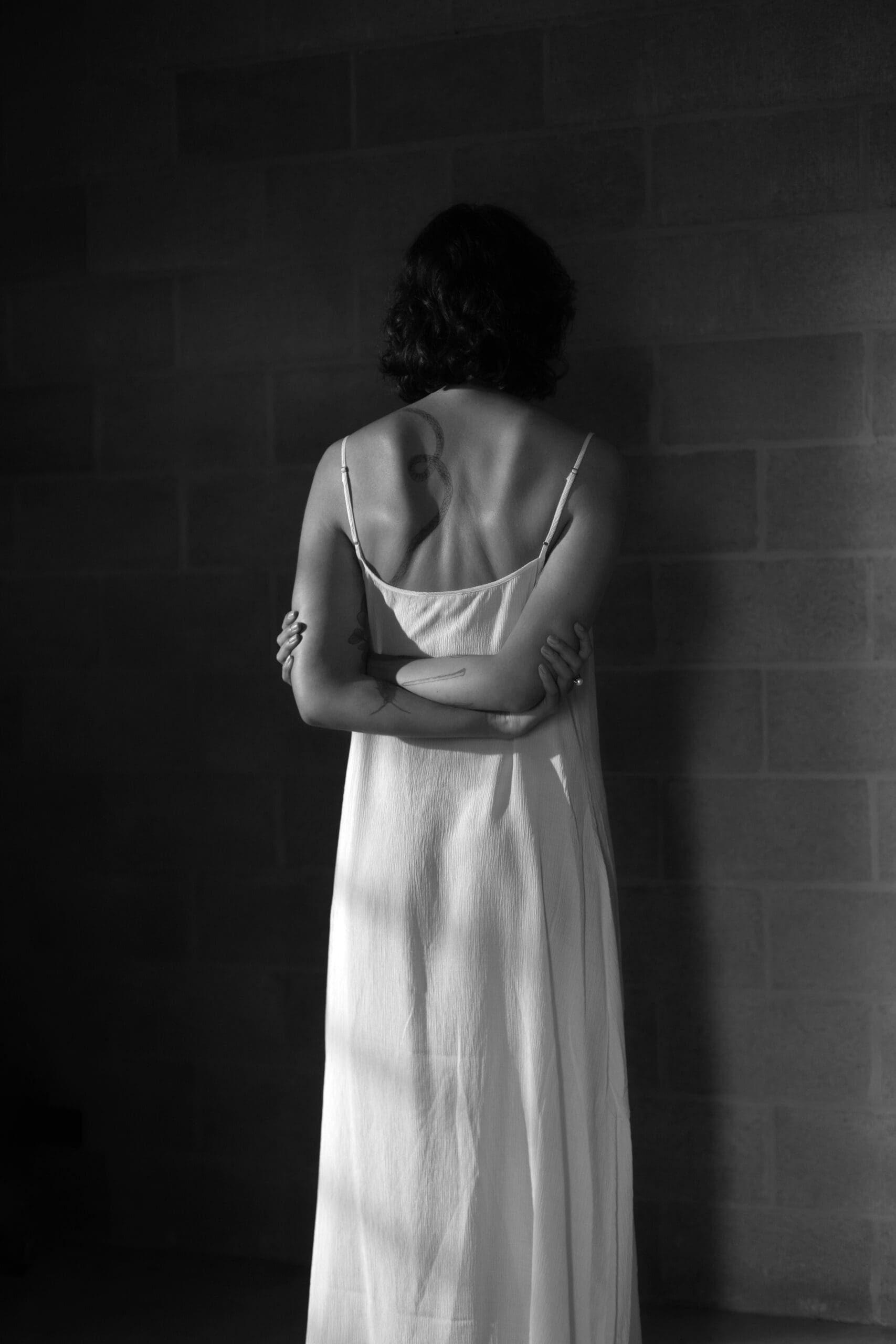
The soundtracks of Millar Baker’s films, most strikingly the thunderscape of The Umbra (2023), spill into the spaces, changing the emotional filter through which we understand the other works, most of which have a muted but high-contrast palette. They are almost monochrome, filling the space with shadows and light. A maze of hanging screen-printed panels, in greys, calico and black, by Lisa Waup lead you into the space, where you meet Mama (2018) by Polish artist Aneta Grzeszykowska—an array of creepy, but stunningly beautiful photographs of the artist’s daughter playing with a photorealist, life-sized bust of the artist herself as a doll. It speaks of death and mourning, and the space between living and dying, or if you like the veil between life and death.
“All my work is based on this research, this questioning the borders of someone’s self,” Grzeszykowska says. “It is all about identity, the body, the meaning of the body, the distance between alive and dead but also the object and the subject.” The use of a life- sized doll enables this. “In my work I try to get distance from my own identity,” she says. “The making of this object is [represents my attempt to] be outside the image of me and to be able to take pictures from the position of the camera, not to be the model all the time.” So, the lines between object and subject, between real and unreal, already thin, are here completely erased.
Elsewhere, there are fibre sculptures by Kune artist Lena Yarinkura, a blue net with hanging feather flowers by Waddi Waddi, Ngarrindjeri and Yorta Yorta artist Glenda Nicholls and soft sculptures made from recycled sequined dresses by Hannah Gartside. They bring welcome surprises as you are led through the darkness by spills of sound.
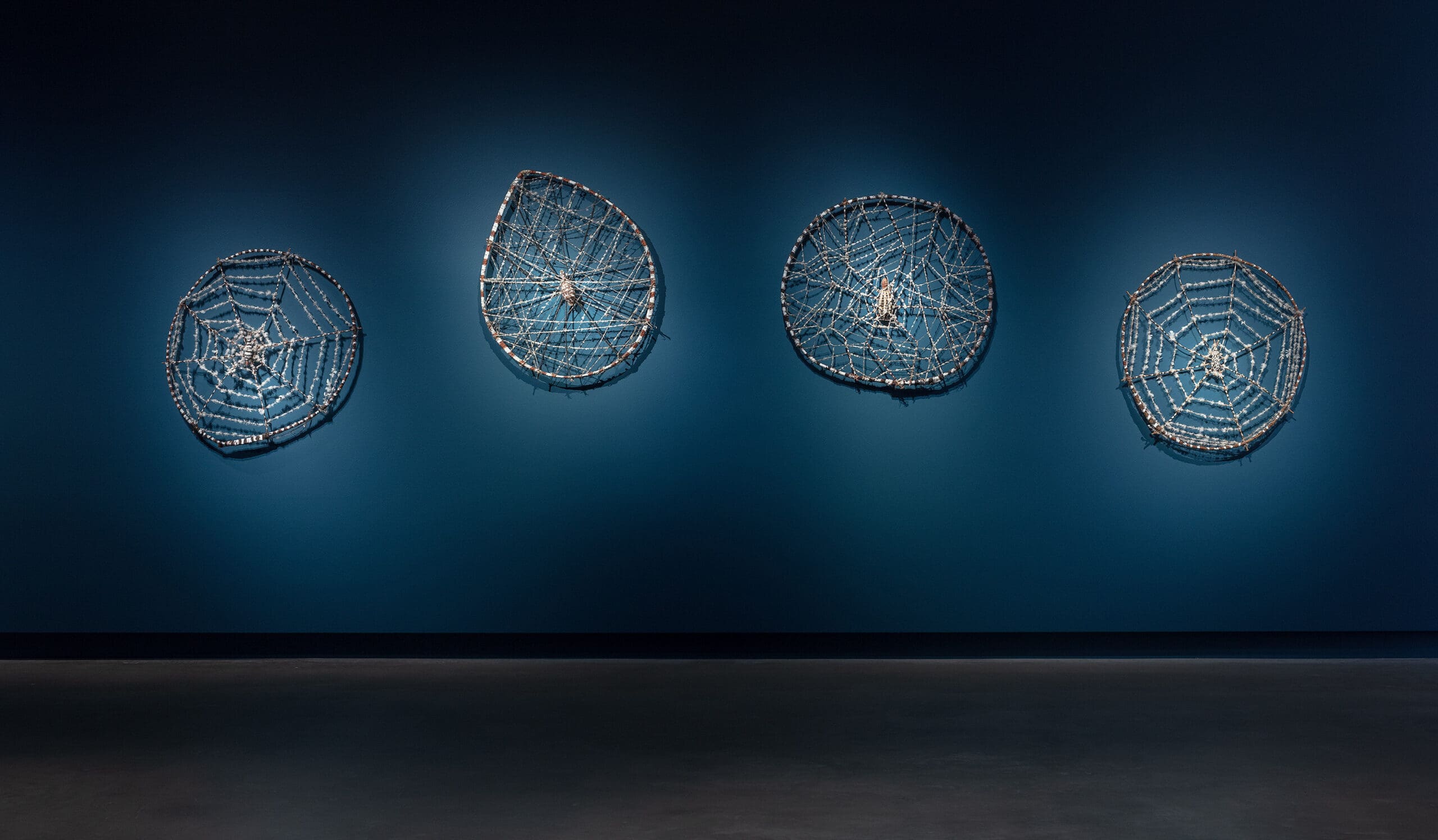
It’s not difficult to imagine that in the gallery spaces the walls between the living and the dead are as thin as those between the artworks; and those walls are mostly glass or fabric, the works divided, for the most part, by curtains. “I think I have always been a little spooky, a little dangerous, playing with spirits,” Millar Baker tells me. “I got to a stage in my career when I was not so scared to centre my own experiences.”
Millar Baker’s films explore spirituality, ghosts and astral projection and the wafer-thin barrier between life and death, something Aboriginal culture is well aware of and something the artist has long explored in her photographic and video works.
To me what the veil is about, for the most part, is death. Not death as a thing to mourn, or death as a spiritual experience, or as an evil, but rather as something to examine, something to look into, something to understand. I feel like I might pierce the veil with my sight if I could stare hard enough. I feel that my heart, as the classical seat of emotions, already has that understanding. The title is apt, and feels almost like a provocation, it defines the work as a title should.
Every work in this show is worth seeing. The works of Grzeszykowska have never been displayed in Australia before, the stunning films of Millar Baker have never been shown together. The veil teaches us that death and darkness are beautiful.
The veil
Buxton Contemporary
Until 1 November

